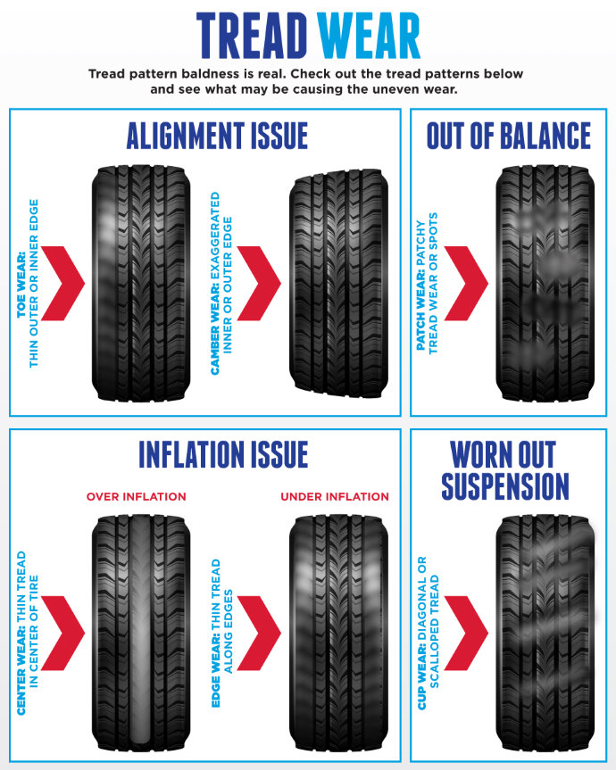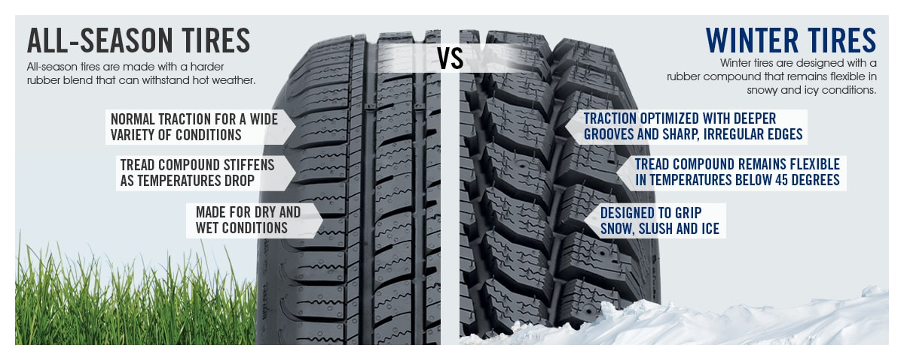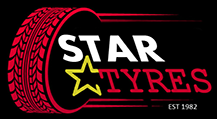Appointments
Email, Call Us or Pop In
Useful information for our customers
UK Law requires that your vehicle is fitted with the correct type and size of tyre for the vehicle type you are driving and for the purpose it is being used. This means having the right tyres fitted and for safety reasons, ensuring that they are inflated to the manufacturer’s recommended pressure.
The legal limit for minimum depth of tread on your tyres is 1.6 millimetres across the central ¾ of the tread around the complete circumference of the tyre. However, it is advised that your tyres should be replaced before the legal limit is reached. Many vehicle manufacturers recommend replacing at 3 millimetres as below this tread depth, stopping distances start to dramatically increase. At 1.6 millimetres in wet weather it takes an extra two car lengths (8 metres) to stop at 50mph than if your tread was 3 millimetres.
It is equally important to ensure that your tyres are free of any other defects such as lumps, bumps and bulges. If there are such defects, this indicates that the tyre is structurally damaged, and any cut or tear bigger than 25mm or 10% of the tyres width can mean your tyres are not road legal. Overall, a regular check of your tyres can help you to avoid 3 penalty points and a £2,500 fine.


Wheel balancing helps to ensure that the weight of the wheel is even when it turns. Every time a new tyre is mounted onto an axle, the wheel should be rebalanced to ensure it continues to rotate evenly. Wheels that are not balanced or are out of balance generally produce a vibration that is uncomfortable to the driver and results in premature wearing of tyres, suspension and steering components.
The first sign that your wheels may be out of balance is when your steering wheel starts to wobble above a certain speed causing considerable discomfort while holding the wheel. Drivers may not always sense an imbalance at the steering wheel which could be dampened by the vehicle weight. However, uneven tyre wear is another sign that your wheels may be incorrectly balanced.
Wheel balancing can help to eliminate this vibration and you should notice a smoother ride. You will also experience more even tyre wear which will help to increase the life of your tyres, saving you money in the long run.

Wheel alignment, or tracking, is the process of ensuring your vehicle’s wheels are set to the optimum position, as per the car manufacturer’s specifications. Incorrect alignment can result in rapid irregular tyre wear and can even affect the handling and safety of the vehicle. Wheel alignment problems can be caused by hitting a kerb, driving into a pothole in the road or by excessive wear to steering or suspension components. It is important to get your wheel alignment checked annually to ensure you get the most out of your tyres.
Keep an eye out for unusual wear on your tyres, such as premature wear on the inside or outside shoulder, which could be a sign of incorrect alignment.
At Star Tyres, we offer 3D computerised wheel alignment with XD technology. This means that we are able to provide a complete four wheel alignment reading in minutes to our customers with our latest John Bean V2200 wheel aligner. This alignment is advanced in its technology as it features a new, highly accurate camera system with XD targets which attach securely to the wheel for more precise results. With 25 years of manufacturer’s specifications, this service provides high-end performance without a high-end price tag.


Email, Call Us or Pop In
Mon-Sat: 09:00 – 17:30
Sun: 10:00 - 15:00
Shackleton St, Burnley, BB10 3DS
Mobile: 07510 075544
Star Tyres, a family-run tyre business in Burnley, Lancashire
